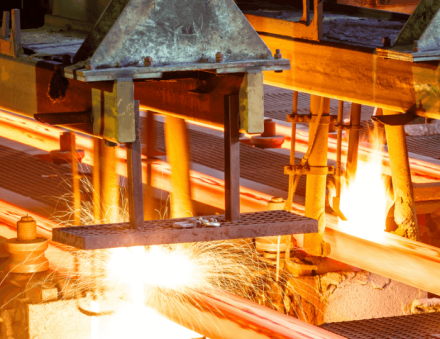Supply Chain Challenges in Food Production 2024
“Robust supply chains are fundamental to a strong economy.” – the White House during the inauguration of the new Council on Supply Chain Resilience.
The US government’s emphasis on improving the current state of operations isn’t surprising. Whatever your views on the new council and its remit, the challenges of disruption and intricate planning can’t be denied.
Having worked in the industry for over two decades, I’ve witnessed the increasing complexity of supply chains, underscoring the need for agility and strategic foresight to overcome operational disruptions.
To put it into context, even before COVID-19, research by McKinsey found that companies experienced disruptions of one or two months in duration every 3.7 years! As a food producer, if you want to bring new products to market or adjust your recipes to adapt to raw material supply or price fluctuations, you need complete visibility of your operations.
I firmly believe that to overcome your obstacles, you must first identify them. In this article, I lay out the challenges manufacturers in the food and beverage industry can expect in 2024. I also offer a solution for those who want to future-proof their operations.
Five critical challenges you should pay attention to
1. Reducing waste and operationalizing sustainability

For most F&B organizations, reducing waste and operationalizing sustainable practices are at the top of their priority list. According to IDC’s study, almost 40% of producers, manufacturers, and distributors selected sustainability as their primary concern. Cost savings are one reason – sustainability improvements lead to reduced energy, water, and waste, after all – but the most significant driver behind this is the end customer.
Sustainability in food production is also gathering global attention. At COP28, 159 countries pledged to orient policies and scale up science and evidence-based innovations to transform agriculture and food systems to respond to climate change.
But much needs to be done. BCG reports that despite over two-thirds of executives claiming bold sustainability ambitions, only 3% are on track to achieve them. It’s time to step up.
2. Improving supply chain resiliency and visibility

The most significant gap F&B companies must address for long-term success is still supply chain resiliency – 63% of organizations view a lack of robustness as a key gap in their operations. The adoption of digital technology is essential to bridge the gap. In fact, 61% of supply chain leaders say technology is a source of competitive advantage.
However, many companies are unable to transition their supply chain due to a lack of digital competencies. Having a partner to guide you through the process of enterprise software implementation can help. Check out our Three Pillars of Success whitepaper to see how our framework can support your transition.
3. Rising raw materials costs

IDC’s report on global F&B industry trends and insights found economic uncertainty and rising inflation to be the apparent top concern across the industry, with the issue expected to remain a primary challenge over the next five years.
The difficulty in procuring raw materials has most likely affected its price. Decision makers and supply chain and logistics managers named a shortage of ingredients as the second biggest supply chain factor expected to impact businesses over the coming year.
Efficiency and waste reduction will form a core aspect of F&B companies’ strategy as they navigate cost concerns. Digitalization and more advanced planning solutions will be critical to maintaining and improving profitability. Meanwhile, more agile and robust recipe formulation and adjustments can drive down costs and ensure supply.
4. Increasing disruptions in operations

We’re at a time of constant supply chain disruption fueled by global events and challenges. In a 2023 risk report, supply chain executives placed climate change, environment, and geopolitical conflicts as the greatest factors impacting supply chains.
Additionally, more than 6 out of 10 global organizations expect geopolitical instability to have a detrimental impact on their supply chains in the next three years, KPMG finds. With this, nations turn inward and grow increasingly skeptical about cooperation and interdependence, potentially exacerbating ingredient availability.
To overcome this volatility, companies require a high level of agility. Blending optimization – a process that allows companies to optimize sourcing costs and use of ingredients – can provide significant opportunities to drive profitability while reducing costs. I’ve explained more about blending optimization and how it can unlock greater business value in this e-book.
5. Managing human capital

Digital transformation is essential for F&B companies to optimize their supply chain operations. However, there’s a huge barrier to overcome – a shortage in highly-skilled labor, especially supply chain planners and schedulers, reports IDC.
Businesses must plan to have the right people in the right place in the planning process. Recent global events have significantly changed the workplace, necessitating new practices, cultures, and planning methods that balance employee needs with productivity.
Hiring the right talent and fast-tracking digitalization will not be enough. Planners should be empowered with the right tools to help them make the best plans.
Why you need Intelligent Food Planning
I’ve observed companies looking for better tools for continuous monitoring and management of their supply chain operations. If that sounds like you, you should know that data gathering is only one part of the puzzle.

A robust planning solution delivers value by using data to provide actionable insights and decision support, helping your supply chain to become more agile and resilient. McKinsey reported that planning solutions allow early adopters to reduce logistics costs by 15%, reduce inventory levels by 35%, and improve service levels by 65%, compared to slower-moving competitors.
With Advanced Planning and Scheduling (APS) solutions, you can access the “big picture”. You can easily move away from siloed planning and align your goals and KPIs to drive efficiency across the planning and production processes. You can proactively run predictive scenarios instead of only being able to react when something happens.
A glimpse of the value you get from an APS:
- Provides end-to-end visibility of your supply chain with one source of truth for all stakeholders in a single solution.
- Locks your corporate goals and KPIs into the DNA of your plan, ensuring all users can see the full impact of their decisions.
- Maximize value and minimize the impact of disruption with the ability to compare multiple scenarios.
How we can help
Having helped many food and beverage manufacturers realize value from their supply chain through more effective value-driven planning, we understand the challenges you face – tactical and capacity planning, cost-effective operational scheduling and sourcing, to name but a few.
We designed Intelligent Food Planner as a solution specifically for you. We’ve proven that optimization technology adds value for various customers: efficiency and effectiveness can be raised by multiple percentage points. Hear directly from Natalia Perez-Espinoza, Senior Director of Technology and Transformation, at Herbalife Nutrition to learn how our partnership helps them solve their biggest planning challenges.
If you’d like to talk more on the subject, you can always email me directly at rvdbroek@thelogicfactory.com.






